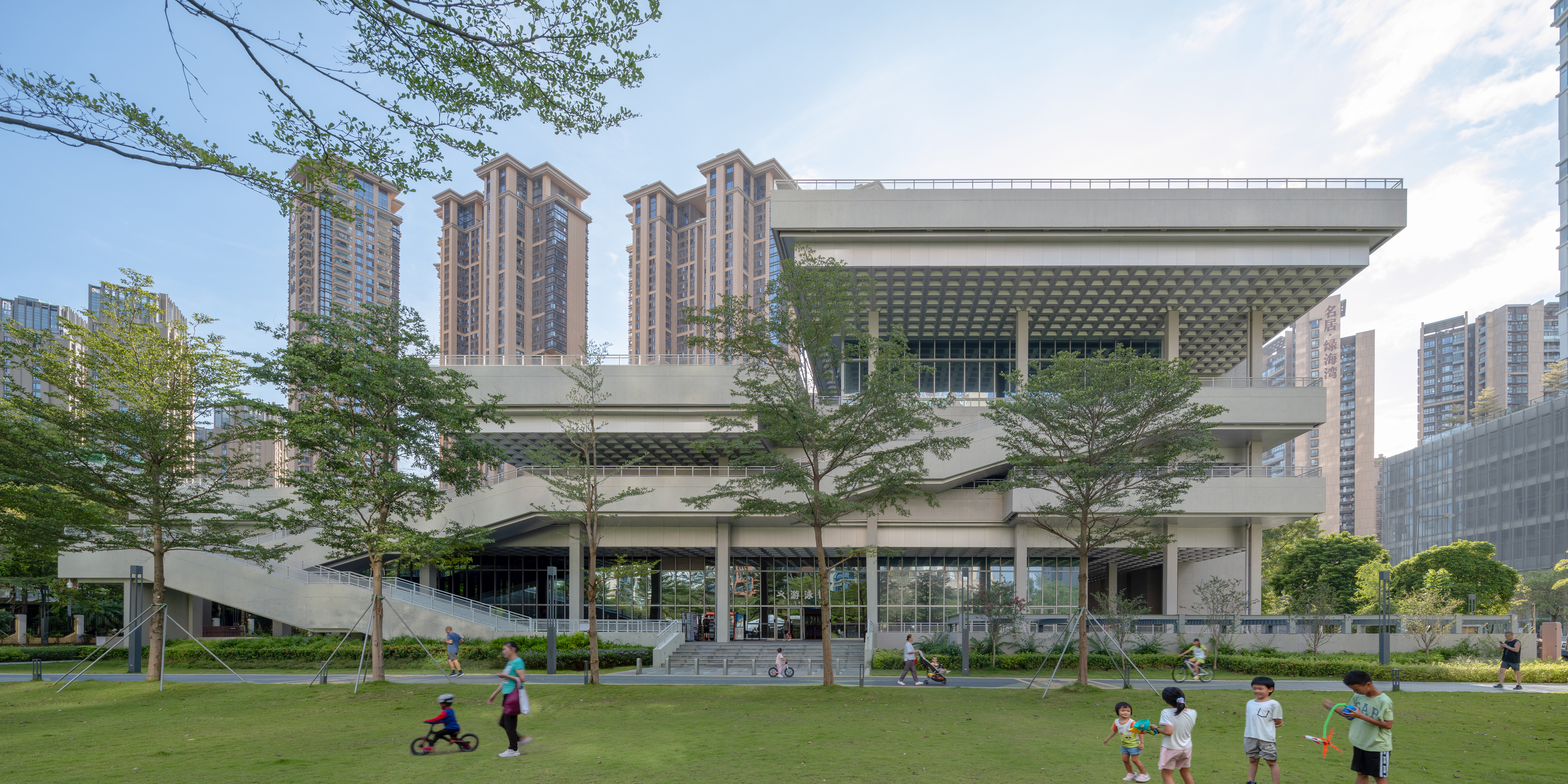 打开微信扫一扫
打开微信扫一扫
复制链接

公共建筑设计 全球五强
获奖者:FRPO Rodriguez & Oriol
获奖作品:DH Palencia
Energy Transformation This small building is the visible part of a whole that remains hidden from view. It is the head of a new energy infrastructure for the city of Palencia. A District Heating network promoted by the company DH Ecoenergías, a brave pioneer in the energy transformation of Spanish cities. Palencia's network is the first of a long series of similar projects that seeks to decarbonize a good part of the national urban geography, turning off fossil fuel heaters - diesel and gas, costly internationally sourced - to replace them with a clean network, fueled by renewable resources that will largely come from an improved management of Spanish forests. Pedagogical Vocation The District Heating network runs under the streets of the capital of Palencia, carrying hot water produced with renewable energies - mainly forest biomass - to buildings in a good part of the city. The Central, on the other hand, fulfills a technical function - hosting the hot water production processes - but at the same time, it has a markedly pedagogical vocation desired by the client: to make the transformation visible and support and allow its dissemination. This double condition requires the approach to the problem of industrial construction not only as a strictly functional matter, where only the economic performance of the building matters, but in a more broadly architectural way. In the words of Teo López, founder of DH Ecoenergías: "This project must be an icon and reference for energy and environmental transformation, and its architecture must symbolize the sources of renewable energies, the change of paradigm, and ultimately, the improvement of public health in cities." Base and Lantern Thus, the architecture of the Central is symbolic, both in its geometry - based on energy and economic circularity - and in its materiality - which opts for literal and pedagogical transparency - presenting the whole as an identity. Two main elements make up the building: a bathtub of heavy concrete and a light steel and plastic lantern - recyclable. The base serves as support for all machinery and establishes terrestrial connections with the outside - through two large galvanized steel gates - and with the biomass silo located underground. Inside, the concrete base has a cover that becomes a perimeter walkway that surrounds all the machinery. The pill-shaped floor allows optimal circulation of visitors around the complete energy process. The steel and plastic lantern reinterpret economical solutions typical of industrial buildings to establish a significant connection with the community it serves: a small cathedral of energy. The facade of polycarbonate sheets - ribbed on three scales - is configured as a soft whitish veil supported on a delicate galvanized and painted steel wire structure. As a final touch, a translucent tower expels the white smoke resulting from a filtering process that occupies most of the industrial space. Similarity system These simple elements of direct and effective architecture not only make up a particular solution - in this case for Palencia - but together they form an architectural system designed to provide similar but not identical responses to the upcoming DH Ecoenergías Thermal Power Plants, which will mark the the cold cities of Spain, helping to promote local employment, the management of forest biomass, the prevention of fires and the care of ecosystems, in addition to collaborating in a real way in the energy transformation of the country.

公共建筑设计 全球五强
获奖者:深圳汤桦建筑设计事务所有限公司
获奖作品:蛇口文体公园 / Shekou Cultural and Sports Park
项目名称:蛇口文体公园 / Shekou Cultural and Sports Park 项目类型:公共设施 用地面积:19284 ㎡ 项目面积:21547 ㎡ (注明:文中数据为投标时指标) 设计时间:2018年、2023年 公司设计范围:建筑方案设计、室内设计 设计公司: 1.深圳汤桦建筑设计事务所有限公司 公司网站:www.tanghua.archi 主创建筑师:汤桦 建筑方案设计团队:汤孟禅,陈文锋,刘华伟 室内设计团队:邓芳,汤孟禅、陈文锋、闫沛祺、汪田浩 室内配合单位:深圳市图人设计有限公司 施工图设计:奥意建筑工程设计有限公司 项目负责人:孙逊,罗伟浪 建筑:杨佳意,徐海,梁佳佳 结构:张薇,蔡永,刘燕 给排水:周林森,钟俊 暖通:刘德道,张素甜 电气:赵振,连一静 BIM:李向东,薛思娜 绿建:司宗根 幕墙设计:朋格幕墙 设计理念: 我们将蛇口文体公园项目的场地以五五对半的用地方式划分成公园景观以及建筑空间两个部分。公园景观以蜿蜒的步道、起伏的草地、以及多个大小不一的有遮蔽的公共广场构成一个个温柔、近人的社区场景,以允许不同人群在公园中活动时拥有多样的选择,也为城市提供了一个为所有人群开放的公共场所。 场地的东侧为建筑主体,整体以现代主义建筑的基本框架呈现了一座符合岭南气候的公共建筑。建筑空间设计以水平多重地面为基本概念,强调以城市以及公园地面向建筑内部公共空间的延伸,使其在附近林立的高层建筑中成为难得以完全开放姿态呈现的建筑体。建筑的服务空间:如电梯、更衣室、洗手间、工具间等功能,被集中放置于垂直的混凝土体量中。而主要的被服务的功能空间以及活动产所,则以通透的姿态存在于这些被抬起的多重地面之上。 这些多重地面的标高与建筑的功能空间高度需求相匹配,使得建筑能够在24米之内满足任务书中提供的所有功能。这个过程使得建筑在地面之上以高-低-高的结构呈现三个楼层,分别承载“体-文-体”的功能空间。这些“地面”的开放姿态,使得当功能空间被关闭的时候,人们也能自由地攀登上建筑的不同位置。而这些宽裕的开放空间也为建筑和公众提供了更多样的、多标高的活动空间。下沉广场位于负一层,为更多的功能空间提供自然的空气和阳光。 我们精心地调整建筑的平台以及公共交通台阶的尺度和比例,使人从地面上升的过程感到舒适自然,没有被迫急速攀升的速度感。而公共区域由于宽度、高度以及和上层挑檐的关系,在保证了最大化的通透性和可达性的同时,也产生了不同层级的公共性以及多样的场所感。在通过台阶穿梭于不同楼层的类似檐下空间的室外走廊的时候,可以明显感受到层高差异所带来的不同空间感受以及在建筑中不同位置中公共性、开放性以及活动速度的差异。 建筑材料则以构造类型进行分类,墙、天花、地面、窗、柱等元素都以符合各自的材料方式表达区分,强调建筑空间的构成逻辑,同时通过1x1m的模数整合。而这些单元化的处理也使得建筑有了与柔软的景观相对应的现代性特点,也用设计本身的逻辑指导了建筑施工的最终呈现。混凝土的流质特点与金属构件的工业感的对比,也将建筑主体结构和非结构的围合构件区分开来。 我们将大量的通风管道被组织在户外的天花空间中,风口位于室内的边界。这样的系统使得室内空间可以获得更多的净高,同时也意外地获得了室外进入室内时豁然开朗的体验,这个感受在较为低矮的二层尤其明显。 回到公园景观中,建筑拥有充分的展示面和公园景观纵深。尽管设计中使用的体系是基于现代建造和材料,但建筑主体在公园中的呈现类似传统的楼阁姿态,配合公园景观中移步异景的路径设计,蛇口文体公园意外地以非传统的表达方式获得了一种地域建筑以及传统园林的属性。 建筑的室内则对应不同的功能空间属性而采用了相应的设计方法。泳池空间以及其配套更衣室以清爽的海洋色系强调水的属性。二层的文化空间,主要采用了更加温和的木质材料,以增加对人体的舒适感和亲切感,流动的空间组织与方正的建筑网格产生强烈的对比。而球类空间则使用了高饱和度的活跃颜色,在建筑主体的不同层次的灰色上形成感官强烈的运动场所。 For the Shekou Sports and Cultural Park project, we divided the site evenly into two parts: the park and the main building. The park contains winding pathways, undulating lawns, and a series of sheltered public squares of various sizes. These elements together construct a gentle, approachable gathering place for the community that allows for a variety of activities for different groups while offering the city a public space open to all. The main building sits on the eastern half of the site. It is designed with a simple modernist architectural framework adapted for the humid climate of southern China. The spatial layout is based on multi-level horizontal ground planes, emphasizing the extension of the city and park into the building interior. The building is unique amongst the neighbouring tower structures and gated communities for being fully open to the public. While the primary functional spaces are arranged transparently on these elevated ground planes, service spaces such as elevators, changing rooms, restrooms, and utility rooms are concentrated within vertical concrete shafts attached to those horizontal structures. The heights of these multi-level planes are designed to match the functional requirements of the interior spaces, enabling the building to accommodate all the necessary functions within a height of 24 meters (the dividing number where a building is classified as a low-rise or a high-rise). This results in a high-low-high structure across three floors, each corresponding to the functions of "sports-culture-sports." The openness of these "ground planes" allows people to freely access different parts of the building, even when the functional spaces are closed. These spacious open areas also provide diverse, multi-level activity spaces for the building and the public. A sunken plaza on the basement level introduces natural air and light into additional functional areas. We've carefully adjusted the scale and proportions of the building's platforms and public stairways to ensure a comfortable and natural ascent, avoiding any sense of forced speed. The public areas, thanks to their width, height, and relationship with the overhanging eaves above, maintain maximum transparency and accessibility while generating varying degrees of public interaction and spatial diversity. The building materials are categorized according to architectural elements, such as walls, ceilings, floors, windows, and columns, each expressed through corresponding materials, highlighting the basic logic of the architecture. The building elements and materials are organized through a 1x1 meter modular system. This modular treatment not only lends the building a modern aesthetic that complements the softness of the landscape but also ensures that the construction process follows a clear design logic. The contrast between the concrete's fluidity and the metal components' industrial precision differentiates the building's structural and non-structural elements. Almost all of the ventilation ducts are organized within the outdoor ceiling space, with vents located at the interior/exterior boundaries. This system maximizes interior ceiling height while creating a refreshing sense of openness when transitioning outdoors to indoors, particularly noticeable on the relatively low second floor. Despite the modern construction techniques and materials used, the building's prominent presence within the park recalls the form of traditional pavilions, thanks to the extensive view and the park's scenic depth. Combined with the design of meandering pathways in the landscape, the Shekou Sports and Cultural Park unexpectedly embodies the qualities of regional architecture and traditional gardens with a non-traditional expression. The interior design reflects the attributes of the different functional spaces. The swimming pool area and its accompanying changing rooms feature a refreshing oceanic colour scheme highlighting the water element. The cultural space on the second floor employs warmer wooden materials to enhance comfort and intimacy, and the spiralling bookstore interior creates a strong contrast between the flowing spatial arrangement and the building's rectilinear grid. Meanwhile, the sports areas are characterized by highly saturated, dynamic colours, standing out against the grey tones of the building's main structure, providing a visually striking environment for athletic activities.

公共建筑设计 全球五强
获奖者:Takashige Yamashita Office
获奖作品:Clinic in the Woods
‘Clinic in the Woods’ is a pediatric dental and orthodontic clinic in Saitama, Japan, planned in the aim of promoting social and educational interaction of children and community. The area around the site has been largely occupied by zelkova trees for centuries, some of which still remains in the garden of the client. There stand residential properties and dentistry the client’s family has run for last 60 years surrounded by the greenery - the garden was so flourished with trees that the neighbors actually called it ‘dentistry in the woods.’ The existing clinic mainly offers regular dental care while it occasionally treats orthodontic and pediatric patients. Along with the increasing demands for latter services, the client decided to build an annex for dental and orthodontic treatments for children exclusively. The project site was planned to take over half of the garden forest, which we wanted to reserve as much as possible, so we have suggested a clinic standing among and along with the plants on the site as part of the flow of landscape from the client’s garden extending towards the town. We arranged walls standing against the private garden for blocking visual access from the clinic, while the gaps between each block still allow shrubs and trees flow into, through the building and out to the street to meet the neighborhood. Perpendicular to these walls, on the other hand, there is no opaque barrier or column interrupting the view that one can clearly see the layers of gardens and rooms across the clinic under the shimmering ceiling. Mixed up with the small courtyards juxtaposed with the volumes and soaring through the skylights, the treatment rooms offer a tranquil, comfortable scene embraced in nature that would soothe the anxiety of little patients and their family. The shrubs also work as an adequate privacy safeguards for each area. Besides the dental practice, the clinic also provides a gym space for chiropractic and exercise programs planned in conjunction with medical treatments, based on a belief of the client in the idea “Oral health comes with overall physical and mental health.” The exercise room, moreover, serves the community as well through several local public workout programs such as yoga/aerobic dance for ladies or chiropractic session dedicated to the seniors in the neighborhood. In the same context, the spacious lounge and the rooftop balcony near the entrance is open for the local community to drop by and sit down for a cup of tea and a little chat even without a medical appointment. The children from the kindergarten right beside the clinic, especially, have an easy access at their break or after school to simply relax waiting for their pickup, sometimes joining the dance class in the gym. They get familiar with the dental clinic this way which helps easing the tense when they actually have to visit for a treatment. The variety of material use on exterior/interior finishing of each volume and changing floor height gives the space a playful spirit for the visitors to enjoy. The relationship between the roof and each volume also varies - touching at the edge, offset, cut by, penetrating through -, somehow all these elements are brought together under the soft silver roof floating over. The continuous mountain-and-valley roof covering the rooms and courtyards is perforated deliberately to deliver sunlight to the ground floor, enough for growing plants underneath. Its folded shape, which resembles the gable roofs of the neighboring houses, structurally enables a self-supportive system with a minimum amount of column. The roof stretches out and forms a cantilever canopy at the entrance plaza and over the front garden open towards the street. Surrounded by greenery and trees under the undulating roof, not only does the clinic create a relaxing atmosphere for young patients but it actually proposes a space to embrace and look after all the children in the neighborhood as a communal hub.

公共建筑设计 全球五强
获奖者:刘洪/胡铮
获奖作品:简上体育综合体
项目位于深圳龙华区民治街道简上路与新区大道交汇处,西北面为简上路,西南面为新区大道,东北面为民悦北路。总建筑面积为62809.29㎡,高53.9m,地上5层,地下2层。 简上体育综合体是国内第一个采取高层错层设计的垂直分布式体育场馆。曾经被《人民日报》誉为“巨人的阶梯”,这一比喻形象的说明了该建筑在顺应场地条件和功能需求时所采取的形态策略。 受场地限制,体育场馆在垂直方向上进行叠加布置。呼应场地周边的城市空间,建筑体量错位叠加,退让南侧学校,在北侧形成有遮阴的室外广场。利用地形高差,将体量最大的综合馆和游泳馆嵌入地下,占据负一层至二层空间。羽毛球馆和网球馆体量大而集中,分别置于顶上四层和五层,在上下大型场馆之间的三层,设置一些小型场馆,比如跆拳道、击剑、乒乓球、舞蹈和健身等。 宏观上看,简上体育综合体融入城市的同时又不失个性。一方面,错动的体量消弱了建筑庞大的体量感,与周边城市肌理相协调。另一方面,极简的形态建立起别具一格的视觉特征,很容易从混乱的城市背景中脱离出来。走近看,建筑多孔性的特征渐趋明显。 适合深圳湿热的气候,为市民提供了烈日下的一片阴影,一个可自由行走的去处。这些没有墙的开放空间容纳了门厅、电梯厅等必要的功能,由此将使用空调的房间边界尽量内缩,创造出一种自由开放的活动氛围。建造一座“透明”的建筑,不是去追求投射在视网膜上的透明性,而是能够在大脑中还原出来的建造逻辑上的透明性。 建筑是凝结了人类物质文明的重要载体,其结构造型与技术是核心。承重结构是建筑最重要的物理架构,结构呈现与空间的关系构成了一部建筑史。我们意在将结构置于建筑表现优先考量的地位,从而赋予建筑清晰明确的秩序感。 建筑结构忠实的还原了建筑空间,建筑形态上错动的盒子亦可解读为上下错位的结构体。主体结构主要由六个钢筋混凝土筒体支撑,每层由层间钢桁架与腰桁架共同受力,上下错动,实现超大跨度与超远悬挑。 结构模数以钢结构杆件的合理节间距控制,这一模数系统也贯穿到建筑、幕墙、景观、室内空间的尺度划分上。不可否认的是,这是一座使用了超过 9000 吨钢材的庞然大物,其重量不可不谓巨大。然而,由杆件所形成的主体结构却化解了整体粗笨的感觉,结合建筑形态,反而有一种漂浮升腾的轻盈感。 建筑立面与结构在几何关系上、亦在构造连接和材料属性上,通过清晰肯定的方式连为一体。建筑立面采用双层表皮的做法,外层为铝拉板网,内层为 low-e 彩釉玻璃。外层铝拉板网从墙面延伸到室外吊顶,刻画出单纯完整的体量感。由于铝拉板网自身半透明的特性和方向性,不同视角、时段和天气条件下,明暗、透明度均有着微妙的变化。表面肌理的变化,消解了建筑巨大的体量带来的压迫感。双层表皮在保证室内进光量的同时,还能有效阻止眩光。 按照建筑师的设想,这将是一栋节能型的体育馆,充分利用自然采光及通风,能够有效降低运营期间照明及空调能耗,节省投资。大部分室内场馆反映出朴素的工业美感。这既是对成本限制的呼应,更是“返璞归真”的主观愿望牵引,剔除一些可有可无的装修,做到少费而多用。回到为运动创造空间的本质。 简上体育综合体是 CCDI设计的项目之中难度系数大、覆盖范围广、控制深度高的一个项目。如果以文学写作类比,简上体育综合体的创作相当于写一部长篇小说。在长达五年六个月的持久战中,我们监督绘制了数千张技术图纸,数十次参与各种技术、管理协调会议。除了建筑专业的工作之外,我们还进行了室内、景观、幕墙、标识、灯光等专业的设计,并对其余近 40 个相关专业的设计工作进行监督审核和统筹协调。


